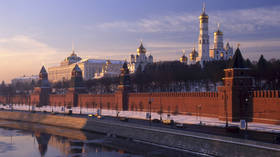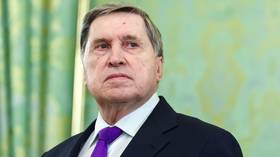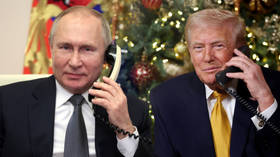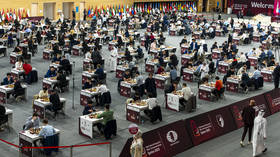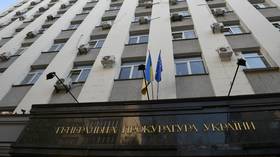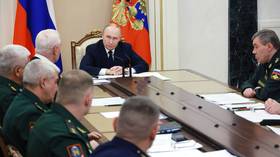Did you just miss your chance to get ruble-rich? Quite possibly
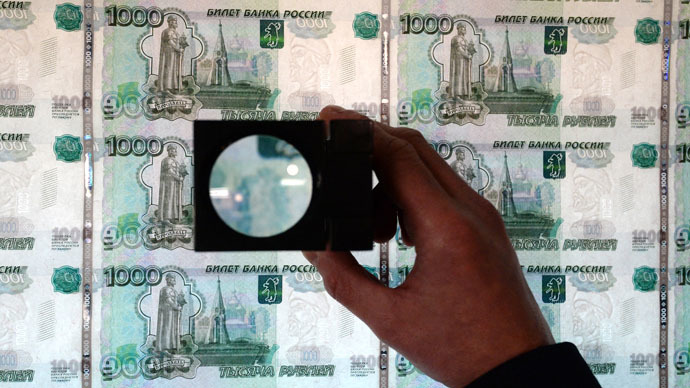
Rogue investors who ignored the negative hype about Russia, are smiling from ear to ear after the ruble gained about 6 percent this week.
The ruble surged 6 percent this past week, opening Monday at 56.55 and closing at 53.5 on the Moscow Exchange on Friday. In the last month alone, the ruble has appreciated by more than 20 percent.
READ MORE: Ruble 'miracle' pushes 2015 gains to 15%
During intraday trading Friday, the ruble shot up 3 percent against the dollar, reaching a new 2015 high of 50.42 against the USD, the biggest upward gyration since October 1998, when the ruble was recovering from the August default and currency crash.
Investors are buying rubles not just to buy rubles, but to get into the Russian bond market, which has been posting high returns compared to European markets. Bond demand is driving up ruble assets, which is why the ruble is rallying.
“No one is buying the ruble for the sake of the ruble, they are buying the ruble securities in order to participate in the rally and to make more profits,” Aleksandr Prosviryakov, a Treasury and Commodities at PricewaterhouseCoopers in Moscow, told RT.
In short, lower bond prices push investors to get into the game, and push up the ruble. In a global investment climate, where central banks are cutting rates to near zero, Russia provides investors with an opportunity- albeit risky- to make higher returns.
“There is a rally in the Russian government bonds market, and the securities are in rubles, and the only way to participate in this rally is to buy the ruble-denominated bonds, and in order for investors to do this, they have to sell dollars and buy rubles,” Prosviryakov said.
After reaching a high of 16 percent, Russia’s 10-year ruble-denominated sovereign bond yields have been hovering in the teens, and were 11.07 percent on Friday.
READ MORE: Russia's 'junk' bonds paying off handsomely
Five-year treasury bonds, known as OFZs on the Russian market, have been fetching yields in the ballpark of 11.5 percent in weakly bond auctions after hitting premium value of 15.5 percent on January 11,2015. On Friday, the yields on OFZ bonds hit 11.27 percent, the lowest since December 2, Bloomberg reported.
“Interest rates on ruble are extremely attractive- you have double digit returns. It comes in an environment when the Swiss issued a 10 year bond at a negative interest rate,” Michael Ingram, a market analyst at BGC partners, told RT.
In January, Standard & Poor’s downgraded Russia’s sovereign debt to below junk investment grade, which politicians in Moscow brushed off as ‘politically motivated’. The Central Bank said they would no longer accept any ratings issued by the Big Three Western agencies – Standard & Poor’s, Fitch, and Moody’s – that were issued after March 2014.
REPO
As the 5-year and 10-year bond purchasing patterns show, both presented peak returns in mid-January, meaning those getting into the game now might be late. Also, the Central Bank, in response this weeks 6 percent currency gain, decided to quell the speed of the ruble’s appreciation.
In response to the major currency surge, the Bank of Russia said it will increase the REPO rate, which will make it more expensive to borrow foreign currency and in theory stall the ruble’s miraculous rally.
The new rates were posted by the Central Bank Friday and the decision was taken “considering the development in the domestic FX market”, the regulator said in the statement.
Others have observed that the Central Bank may be artificially inflating the ruble, since at the end of the week that ended April 3, the Russian Central Bank spent $5.5 billion propping up the ruble, even though it had already made sturdy gains in 2015.
Official foreign currency reserves officially stand at $355 billion, still the sixth largest worldwide, and sufficient to cover any immediate debt obligations.
“Panic is gone, we have seen that the Russian foreign reserves have stabilized, they actually grew last week, but still are around the $360 billion mark. This is a factor showing the situation has stabilized,” Aleksandr Prosviryakov, said.
Has Russia kicked the oil curse?
This past week Brent, the benchmark for more than half of the world’s oil, advanced 5 percent, whereas the ruble improved 9 percent. Most analysts agree that the ruble has become more resilient to oil, just to varying degrees.
Analysts at Russia’s VTB Capital believe that the ruble’s stellar performance is “largely unrelated to oil dynamics,” analysts wrote in a note Friday.
“We see that the oil prices have stabilized, everyone was talking about a catastrophic scenario after the OPEC decision not to intervene in the market, people thought the oil price would go down to 30 maybe 25, this of course would be very bad for Russia,” Prosviryakov said.
While most private Russians are cheering the ruble rally, it is less beneficial to Russia as a country, as a whole. A higher ruble means the government doesn’t make as much money on the oil they sell in US dollars. The dollar needs to be stronger to meet all budget expenditures, which may explain the Central Bank’s REPO action.
Fundamentally undervalued
While both analysts agree that the bond market is driving the ruble up, they don’t agree how long the run will last.
READ MORE: Russian ruble seen as world’s best performing currency, hits 2015 high
“The ruble remains fundamentally undervalued, there is a lot of momentum out there in terms of investor appetite for yield and risk, and that being the case, I think that ruble appreciation in the near term at least has some way to go, I think we could see another 10-15 percent,” Michael Ingram, a market analyst at BGC partners, told RT.
The ruble nose-dived in the last three months of 2014 in part due to sinking oil prices. Another factor was the Central Bank’s decision to move the currency to a free float regime in November. Analysts and politicians alike echoed the opinion the ruble was significantly overvalued, even at values of 45 and 47.
“If you look at what the IMF thinks about the ruble in terms of its fair value internationally, their own estimate of the ruble is just under 21 to the dollar. It does suggest that Ruble is fundamentally cheap,” Ingram said.
The currency, the world’s second worst performer in 2014, is now the best in 2015. The ruble has recovered 15 percent in 2015, and more than 55 percent since December 16, dubbed ‘Black Tuesday’, when the ruble bottomed out against the dollar at nearly 80 rubles per 1 USD.


